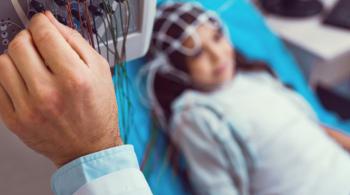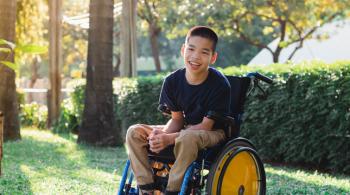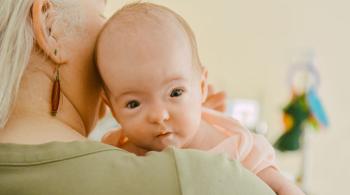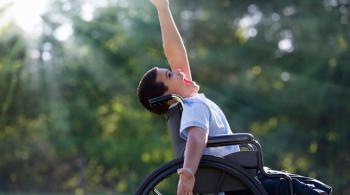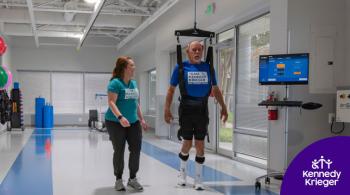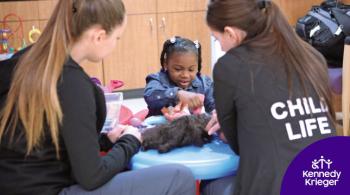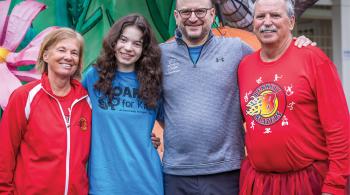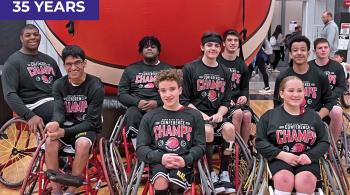How Does Exercise Impact a Child’s Developing Brain?
What do we know about the health benefits of exercise and other physical activity for children? We know it builds strong muscles and bones, helps keep children at a healthy weight, and can contribute to better sleep. But wait—can regular exercise boost a child’s brain power? Find out when Dr. Brad Schlaggar, president and CEO of Kennedy Krieger, and his guest Dr. Autumn Ivy discuss the fascinating connection between physical activity and brain development in children.
Learn More About Kennedy Krieger Faculty & Staff Members Featured in This Episode
Learn More About Kennedy Krieger Faculty & Staff Members Featured in This Episode
View Episode Transcription
Dr. Brad Schlaggar (BS): Welcome to Your Child's Brain, a podcast series produced by Kennedy Krieger Institute with assistance from WYPR. I'm Dr. Brad Schlaggar, pediatric neurologist, and president and CEO of Kennedy Krieger Institute. As summer approaches, more and more people take advantage of the warmer weather by being more active with running, cycling, swimming, and other physical activities. Whether recreational or competitive, we know that regular exercise provides numerous benefits for physical and mental well-being, including improved cardiovascular health, reduced risk of chronic illness, enhanced energy levels, better sleep, and more. Additionally, scientists have found that regular exercise provides numerous benefits for brain health, impacting everything from memory and thinking skills to mood and stress levels. Studies show that regular exercise can affect the brain structure and function, modulating the size of brain regions, crucial for memory and learning, for example, and protecting against cognitive decline associated with aging and nerd degenerative diseases. However, most of the research on the benefits of exercise has focused on adults. What do we know about how exercise and physical activity positively impacts children? Well, children receive many of the same physical benefits of exercise that adults do. Exercise build strong muscle and bone, supports healthy weight management and improves sleep. But how does exercise impact a child's developing brain? To delve into this topic, I'm joined by my exceptional colleague, Dr. Autumn Ivy. Dr. Ivy, a child neurologist in the Department of Neurodevelopmental Medicine at Kennedy Krieger Institute, is also the director of the BRAVE2 Neuroscience Research Laboratory at Kennedy Krieger. BRAVE stands for Building Resilience After Adversity and Vulnerabilities Through Exercise Epigenetics. Dr. Ivy is also an assistant professor of Neurology at the Johns Hopkins University School of Medicine, so welcome Autumn. Autumn, let's start with some basics. What positive benefits does physical activity produce in a child's developing brain?
Dr. Autmn Ivy (AI): Well, thank you so much, Brad, for the invitation. I'm really excited to speak more about this topic because I think it's incredibly important. Aerobic exercise is what I'm going to be primarily talking about, which is the type of exercise that increases your heart rate, increases blood flow, requires oxygen delivery to organs to sustain energy needed for that exercise. We know that this type of exercise leads to substantial functional changes in the brain of kids and adults. Most notable in studies that have focused on kids is that aerobic exercise increases cognitive performance, as you mentioned in the intro. But specific domains of cognition that are impacted by exercise include reasoning skills, improved focus and attention, problem-solving skills, even math problems, and things that kids encounter in the classroom. All of these things can be impacted by levels of aerobic physical activity. Scientists in this field of exercise, neuroscience, looking at human studies have also looked at the brain MRIs of these kids. With those brain images, what they've done is they've actually looked at a type of MRI called functional MRI. This type of MRI allows us to see activation of certain brain regions in response to whatever experience. They've found that the areas of the brain that are intimately involved in these types of reasoning, focusing, learning, and attention skills are also activated, sometimes change their volume in response to exercise and show alterations in their activity as a result of exercise. These studies are fundamental for our understanding of how exercise can also impact the developing brain. There's a lot of overlap between how exercise impacts the developing brain, as well as the adult brain, but there are also some differences. I'm glad that we're talking about this, so we can highlight those differences. I also want to say in response to this first question, it's important to know that there are guidelines put out by the World Health Organization on the types of exercise and amounts of exercise a kid should get in these childhood years. That is 30-60 minutes of moderate to vigorous intensity, physical activity. We're again, talking about the aerobic increasing heart rate physical activity about three times a week at minimum. That could look like anything from unstructured play to team sports, but things that get their heart rate up. That's really what we know in general about physical activity affecting the child's brain.
BS: In the converse, in what ways would you say that physical activity is critical or crucial for healthy brain development. In the absence of activity, what can go awry?
AI: Absolutely. Well, first, I think this is a really important question. It's a really important question for our field that has not been completely addressed. We haven't asked that question directly, but there are studies we can look to to think about how physical activity can impact the developing brain and lack thereof can impact the developing brain. Studies that actually look at either physical immobility, periods of immobility, and how that impacts brain development can give us clues or insights into how exercise can impact that developing brain and those developing brain regions, important for cognition, learning, and memory. One such study, and I'm going to refer to some studies that are pre-clinical or use different types of models other than humans in order to gain information and understanding. One such study using a rodent model, looked at how reducing the motorability of those rodents during early life periods of development, pre-adolescent periods affect the way the brain develops in those rodents. This study that I'm referring to actually focused on a certain type of protein that's released by contracting muscle. This is true across species and rodents and in humans. This type of protein or category of proteins are called myokines. Some people call them exerkines. But these factors that are secreted by exercising and contracting muscle have actually been found to make their way to the brain and can signal within the brain and within these brain regions that are important for learning, memory, attention to actually boost those functions. In this study, where they had immobilized rodents, they found that there were less myokines being released, and less of that signaling going on in the brains of these rodents. Long-term impact of that was less efficiency with regard to the learning and memory tasks that these rodents underwent. That study gives us clues about how it's important for these factors that are secreted by muscle outside the brain can actually signal to the brain even during development to allow the brain to function at its optimal functioning level. Are there ways we can maybe stimulate the production of myokines or exerkines to help promote brain development? Well, the jury's still out on that, but I think that that's an outstanding question that we should focus on in the future. I will also comment because I'm a child neurologist that many times we have patients with different types of neurologic diagnoses that have an associated difficulty with learning or difficulty in school. It's not necessarily related to their primary neurologic diagnosis, but it's just something that comes along with territory. Oftentimes, when we're focused on treating the primary neurologic problem, many times the learning and attention difficulties get better as well, but sometimes they don't. We can think about physical activity as being something that we can harness and promote even in these populations of kids that either through their diagnoses, can't exercise as much, or they just aren't able to or aren't doing it because of our industrialized nation and screens and all of that. We can harness physical activity to optimize brain development for all kids.
BS: The way the brain functions, it's very much dependent on the connectivity or neural pathways that connect different parts of the brain to other parts. How does exercise impact the development and functioning of those neural pathways in a developing brain?
AI: This is a great question. I'm especially interested in it because my lab has looked at this in a very straightforward way. Again, using these pre-clinical models, we were able to exercise these mice for juvenile periods before they are "adolescents, " which is only four or five weeks of life for the mice. But they get on running wheels and they run for set periods. We asked the question, well, if we exercise them during the set periods during early life, how does this actually affect those neural pathways? We focused on the neural pathways that support learning, memory, attention, these cognitive functions. What we found was something that was really striking. We had comparable groups. We had a group where they exercised early in life, before adolescence. We had another group that exercised later in life after adolescence. We compared those two. What we found was that the ones that exercised before the adolescent period actually had this long lasting effect on something called synaptic plasticity. Now, what is that? That's a way we can actually measure the strength of neural pathways. Using our tools that we can use in the lab, we can ask questions about, well, how strong are these connections from one brain region to another? Do they get stronger with exercise? In both groups, they got stronger with exercise. But the thing is, with the early life exercise group, the strength of that neural connection lasted for a longer period than those that exercise later. They both have the benefit, but there's this unique benefit of exercising early on and having this longer lasting impact of exercise on neural cones, neural strength. We found this to be really striking. We also asked the follow up question. well, what's sustaining that impact of exercise? What's sustaining that strength of the neural connections on their long lasting benefit on memory? We started looking at this other domain of neuroscience called neuroplasticity. Neuroplasticity is the brain's ability to change and adapt to its environment. Maybe this early life period, where they're exposed to exercise allows that neural circuitry to change and adapt to the environment to allow for more efficient learning. In the lab, we're able to actually look at on a molecular level, something called epigenetics, which are these chemical tags. We can look at them. We can see exercises promoting those tags. Maybe that's the basis of why this early life exercise has this long lasting benefit on neural pathways, neural connection, neuroplasticity, and ultimately memory.
BS: You're just making the point, Autumn, about pre and post-adolescence. It raises the issue that across development, different stages of development, there is likely a different kind of expectation for the activity that a developing brain and body will experience. What do we mean by physical activities, say, at the infancy or early childhood stage, and how does that compare with what our expectations are for later on in development? How does that relate to the way activity and exercise influences brain development?
AI: That's a great question. We know in our field that after birth in humans, the central nervous system, the brain, the spinal cord, and the way the brain and spinal cord talk to our muscles undergoes this long, protracted or long period during those first few years of life where it's still developing. That's why kids don't come out of the womb walking or running. We're developing those neural connections over that early life period. This is my opinion, but as a scientist in this field, I don't think there's necessarily a purpose for the types of aerobic physical activity that early on in life prior to the actual connections that allow us to participate in physical activity. However, we can still think about the mechanisms of how physical activity influences brain development, and then take that back to patients who don't quite have those connections yet and think about, well, how can those developing brains, maybe they're vulnerable for whatever reason, how can those developing brains still benefit from these mechanisms, if you will, these benefits of physical activity? Believe it or not, they are actually gentle exercises that are developed for even the youngest of us and even NICU babies, babies that are born prematurely or that are in the ICU soon after birth for whatever reason. These therapies, having been developed in the context of supporting neonates and their brain development, involve coordinated movement patterns and gentle limb exercises designed to contract those developing muscles, designed to stimulate those developing muscles. These movements can be at the trunk, the neck, the limbs. In order to activate them, maybe we get a release of some of those myokines. This is yet to be studied, but that's a possibility. But these types of exercises that are implemented by specialists, physical therapists in the ICU involve variations and strength, and resistance, rotation, directional changes, all of these things are integrated into this neonatal exercise, if you will, to hopefully benefit brain recovery in the context of injury or brain development in the context of prematurity. These types of early exercise interventions have only recently been studied and thought about, that they've been shown to be helpful for pre term babies in terms of their long-term brain development.
BS: Of late, we've come to understand that sex can be an important biological variable in brain development and function. I'm wondering if there's any signal difference between, say, boys and girls in the influence of physical activity on brain development.
AI: This is an important question because as we think about exercise is something we can individualize for our patient care, and we can consider the patient's biological sex as being impacted differentially by the exercise intervention. It's important for us to understand, well, how can an exercise intervention impact biological boys or biological girls differently? The first thing that can come to mind is, well, at the heart of these sex differences is hormonal differences. The types of hormones that the brain is exposed to in a biological male versus biological female are different. They're different even before adolescence. Thinking about the hormonal environment before adolescence and then after adolescence, and how exercise interplays with all of that, is a really complex topic. But I think one that is important to explore. The good news is that at least in adult studies, both male and female sexes gain the cognitive benefits from aerobic exercise. Specifically, the more efficient learning, the more efficient memory storage and memory performance, that benefits males and females fairly equally in the adult literature. Sex differences have been highlighted in the adult literature, mostly when we think about neurodegenerative diseases so things such as dementia and Alzheimer's disease. How does exercise intervention impact long-term outcomes of these neurodegenerative diseases? Studies have shown that actually there's evidence that females may reap a greater benefit the males, and the ability of exercise to protect the brain from these types of neurodegenerative diseases? That's one sex difference that's panned out in the exercise literature, but that's on the other end of this age spectrum. We're worried about brain development for early life aging, if you will. The field has very little literature looking at sex differences and effective exercise prior to puberty. My lab is certainly interested in it, and so we have outstanding questions. We're looking into this right now. But right now we don't have a complete understanding, so we can't answer that question yet. I think it's one of these important questions that the field has yet to tackle.
BS: You've touched already on kinds of activity, making distinctions between types of activity and duration of that activity. Can you expound upon that? Does the type of activity and duration of activity matter as it loads on brain development?
AI: Absolutely. In addition to the type and duration of activity, I will also add that the timing of the exercise, particularly during early stages of development, also matters. We can think about type of exercise, the duration of exercise, and the timing of that exercise. With regard to the type of exercise, we can think about two major categories, and I mentioned one of them already. The first being aerobic exercise, we've discussed involves relying on blood flow, oxygen needed for energy production to sustain that exercise for a long duration. Then there's anaerobic exercise, which does not require that same amount of sustained energy production. You can think about shorter bouts of exercise, muscle resistance training, or muscle strengthening type exercises are considered anaerobic in many regards. The hip training types of exercise also fall into this category. Regarding the health and function of the developing brain, aerobic and anaerobic exercises seem to have differential effects. The aerobic exercise has been the one that's been mostly studied and has this positive association with these long-term cognitive benefits. The anaerobic exercise has been studied, but there's conflicting results right now with regard to how much that type of anaerobic activity benefits cognitive function. It may be, due to the differences in blood flow and types of things traveling from the body to the brain that you don't get those same factors with aerobic versus anaerobic exercise. That's why you may have different outcomes on brain function. For the duration of exercise. Well, this recommendation can depend on what the objective is. Like if you want to perform well on an exam, as an adolescent or a young adult in college, sometimes folks can exercise for an hour, so 30 minutes to an hour prior to a test, and feel like maybe they're a little bit sharper or have some greater cognitive flexibility and more focus with that exam because they had that short bout of exercise right before, so they primed themselves for performance. But then there's also the longer duration exercise, weeks to months, having it as a habit. That's when you get those longer-term benefits. Then lastly, the timing of exercise, as we've focused on for the theme of this podcast, we believe and we're starting to study and reveal that the timing of exercise during her early life actually matters for having a long-term benefit on neurodevelopment and long-term outcomes.
BS: As you point out, we've been focusing on exercise, aerobic and anaerobic, but part of activity also includes playing sports, including team sports, sports that require a rule structure, that require social interaction. I'm wondering, going beyond the exercise itself, to what extent does playing sports, like team sports affect brain and cognitive development, including, for example, executive functioning?
AI: That added layer of bringing in these coordinated movements and coordinated motor skills, social engagement, team engagement, and incorporating rules that you have to follow for playing a team sport, layering all of that on top of the aerobic physical activity increases the complexity of the activity, and it can contribute to the positive benefits. It can confer different positive benefits, but it can also be synergistic, or it can work with that aerobic physical activity to have an even greater benefit on cognitive function. Studies have found that the continuous participation in these sports-based exercises or exercise interventions that involve team sports, coordinated motor skills can improve these same domains, things like working memory. The memory that's needed in the moment that you're pulling from in the moment, inhibitory control. The type of control where you can focus on one strategy for playing your game and not focus on the other distractions, but be very focused. Also, cognitive flexibility improves with this type of team sport-based exercise. So incorporating rules of the game, being able to be flexible when those rules change or people you're playing against changes, and you have to use different strategies. All of those types of components that you layer onto the aerobic activity amplify what those benefits are going to be. Studies have also looked at performance on cognitive tests for children and adolescents who participate in these types of team sports and even individualized sports. I found that there isn't that much of a difference, actually, between team sport playing versus individual sport playing in terms of improvements on cognitive test performance, and these are academic tests that were measured in these studies. The final thing they looked at were brain MRIs, and same through line is here and the greater volumes in brain region supporting cognition. The health and integrity of the neural connections is also improved with these activities and their participation.
BS: I'd like to return to a point that we talked about a little bit earlier about children that have motor skill limitations, maybe due to physical or a neurodevelopmental disability, for example. Just want to return to reinforcing the positive impacts that participation and exercise and physical activity has on brain development and function. Can we return to that and just rescore that important connection?
AI: Absolutely. For children with these motor limitations that we see in our clinics and we see at the Institute, we know from studies that they are potentially not benefiting from the increased blood flow to muscle and to brain that results from physical activity. They could potentially not benefit from the myokines or the extra kinds, those are those proteins that are released from contracting muscle. There are also other types of what we call neurotrophic factors that are released locally in brain regions that actually promote neuroplasticity. One of these factors is called brain-derived neurotrophic factor or BDNF. And so studies have shown in humans and across species that BDNF not only is important for promoting neuroplasticity, promoting the health and the strength of connections between brain regions, but it's also increased locally in the brain with exercise. Our patients who don't have the opportunity to have that same type of physical activity could potentially be missing out on these benefits. Current interventions that we rely on in our clinics to aid in our patients ability to start benefiting from physical activity is having physical therapists, introduce types of therapies to get those muscles contracted regularly and often. I believe that our fields actually could benefit from doctors working more closely with physical therapists and scientists to really understand, well, what type of physical therapy intervention can be optimized to then gain these benefits at the cellular and molecular level, these benefits for getting more exposure to myokines, more exposure to BDNF, more blood flow to the brain. I think that that's really where the field is headed when we're thinking about exercise interventions and those who otherwise cannot, is how we can optimize those interventions to get the most benefit from those types of molecular benefits of exercise.
BS: Excellent point. Autumn, I'm thinking, besides exercise, what other kinds of factors can play a role in a child's environment that can impact brain development? I know this is something that you think about quite a bit, yourself and your laboratory. What other kinds of factors are in play?
AI: We do think about exercise quite a bit, but we also think about exercise in the larger context of an environmental exposure. That can happen during childhood that we can harness for its benefits. But other types of environmental exposures that play a role in brain development are things like the home environment, whether it's stable and safe, whether the child feels safe there, the nurturing relationships that the child has in that home environment or in their external environment, healthy and nutritious food and access to those things. We know that for the child's brain development and body development, this is crucial. Early education, economic stability has been found to be incredibly important for a child's brain development, believe it or not, so economic stability is key. Living conditions in the outdoor environment. Access to green spaces, trees, healthy air to breathe. Replacing screen time with outdoor time, which one can do if there is access to this type of green space, healthy air around the children in their environment. Access to free play, social interactions, and social play. These are all determinants of brain health and brain health outcomes. Optimizing these determinants and making them available, making them equitable across populations that we see and across children and their environments is going to be incredibly important for all kids to thrive.
BS: Last month on Your Child's Brain, our guest was our colleague Dr. Ernestine Briggs-King.
AI: Yes.
BS: We talked a lot about adverse childhood experiences, traumatic and toxic stress, and brain development. To what extent do you think that exercise and physical activity can be in a sense, a treatment or to positively impact a child's development in the context of exposure to stressful adversity?
AI: Absolutely. That was a great episode, and my lab is also very interested in this topic, specifically in understanding how exercise on this molecular level can buffer against the negative consequences of early stress exposure and exposure to adverse childhood experiences or ACEs? The current idea behind this phenomenon is that early life stress and chronic exposure to ACEs leads to this excessive activation of the child's fight-or-flight response. We know that when there's excessive activation of the fight-or-flight response, that there's activation of this axis in the brain and body called the HPA axis, and what that results in is stress hormones being released. Evolutionarily speaking, the release of these stress hormones allows us to adapt to that stressor. But when there's excessive activation, so chronic exposure to stress, chronic activation of this HPA axis, that leads to toxic stress or too much stress hormone around, such that when the child is exposed to subsequent stressors, they may have this heightened or elevated response, too much stress hormone doing its thing, including increasing inflammation and impacting other organs throughout the body. Why do we think about exercises maybe combating this? Well, we know that the stress hormones also signal in the brain in those brain regions that support memory, support learning. Specifically, when there's a fight-or-flight response, we don't need to do a lot of long term memory formation. We just need to learn this is the scary thing and I need to get away from it. The stress hormones allow us to do that. They signal in the brain to allow us to focus and to get away from the stressful thing. But what exercise can do is it can buffer against this excessive stress hormone activation in those brain regions, important for learning and memory so that we can maybe buffer against that excessive fight-or-flight, that excessive needing to escape, but instead be able to still engage those brain regions that are important for learning and memory. Even in the context of a stressful situation, we can buffer against long term consequences of that early life stress. That's when we think about exercise may be potentially benefiting against chronic stress. We also think about something called epigenetics. I referred to this a little bit earlier. It's these chemical tags that are in response to the environment. Any type of environmental signal can put these chemical tags in our cells and allow our cells to adapt to the environment. We think exercise is acting through these chemical tags, acting through epigenetics, to change how those cells respond to stress and adapt to the environment.
BS: Can you share with our audience how you as a physician scientist came to this line of work and thinking, our argument about exercise epigenetics, brain development. Where did the inspiration come from?
AI: The inspiration came from a long journey of integrating all of my experiences along this path to becoming a child neurologist and a scientist. It started with when I was an undergraduate student, and I had a mentor who was studying exercise and neurodegeneration, and I saw the incredible impact that it was having on neurodegeneration and staving off disease. Then when I was a graduate student, I had the opportunity to study early life stress with world famous scientist and was able to learn so much in that context. Also, it was highlighted to me, not only during the PhD work, but also in seeing patients that patients in child neurology have chronic stress exposure and it impacts their brain health. Now, we don't have much that we can do about it. But yet, I've studied this thing that I saw, was not based on medicine or utilizing a medication, but was just as effective as a medication and staving off some of these cognitive consequences. That maybe it's time we consider exercise and its mechanisms in the context of chronic stress, in the context of neurodevelopmental disorders. That may be exercise it's not the cure all for everything, but it can certainly teach us a lot about how we can buffer against some of these neurodevelopmental consequences of stress or other types of exposures or even some of the genetic consequences and neurodevelopmental differences that we can maybe optimize brain health and brain developments by integrating what we've learned from exercise.
BS: Let's close with, I think often my favorite question to ask of a physician scientist. What excites you about your own research program or what's happening in the field as a whole is the next big idea that will be coming out of the research space?
AI: Absolutely. I've been alluding to this is that, I really am interested in understanding how exercise can be harnessed on a molecular level, so we can precisely prescribe it for our patients. Whether we track the effects of exercise using wearables, whether we track the effects of exercise by looking at epigenetics, we can more precisely understand exercise and how it can positively benefit our patients in their brain health. I'm excited about that area. Sex differences and exercise, I'm also really excited about understanding that. I think we have a lot to learn in that domain. The consequences of our current environment of increasing screen time, also increased mental health issues, anxiety, depression. I think all of these things are linked. How can we consider ways in which we can increase engagement in exercise and engaging populations that are at risk for these types of mental health issues to mitigate some of the long term consequences? We can't take away screen, social media is here, and it's part of this younger generation. But how can we engage patients, adolescents at this age to offset some of the long term negative consequences that we know are associated with screen time that are contributing to this increased prevalence of mental health issues? That's where I'm really excited about the direction of this field going.
BS: Well, I think that's an excellent place to end. Thank you to our guest, Dr. Autumn Ivy, and we hope that you are listeners have found this discussion about exercise and brain development in children interesting and informative. Please check out our entire library of topics on Your Child's Brain at wypr.org, KennedyKrieger.org/ycb or wherever you get your podcasts. You've been listening to Your Child's Brain. Your Child's Brain is produced by Kennedy Krieger Institute with assistance from WYPR and producer Mark Gunnery. Please join us next time as we examine the mysteries of your child's brain.





